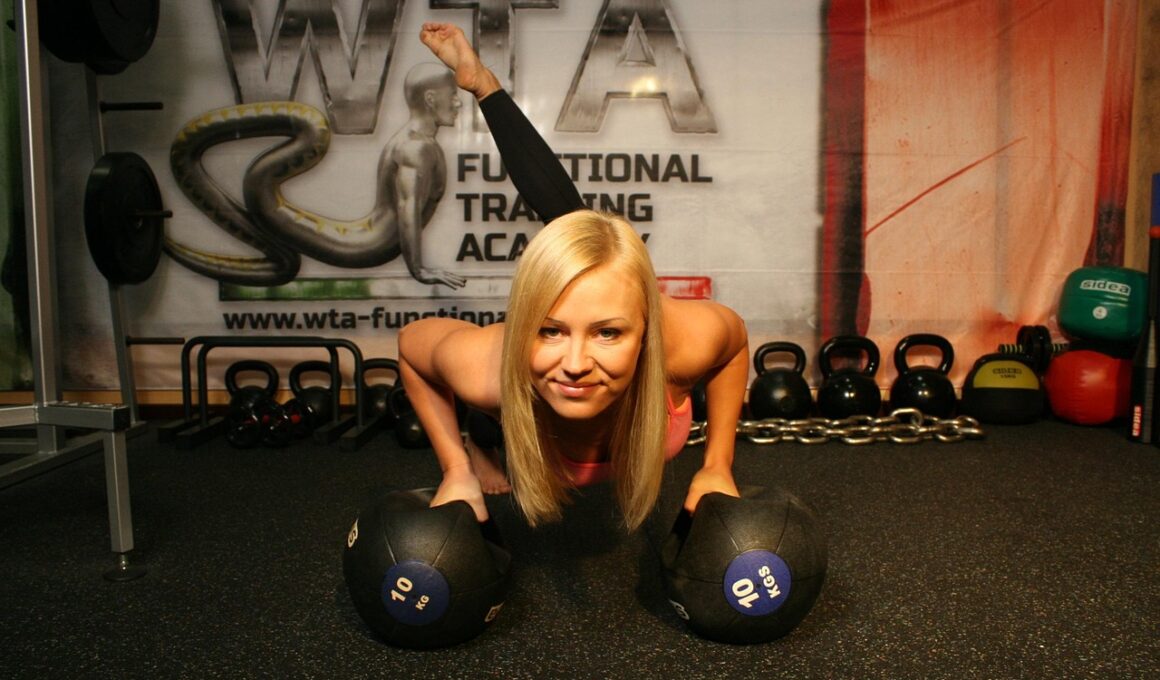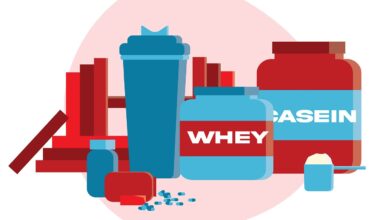The Best Apps to Guide Your Functional Mobility Training
In today’s fitness landscape, functional mobility training is increasingly recognized as foundational for overall wellness. Incorporating mobility into your fitness regimen helps improve movement patterns and reduces injury risks. Apps specifically designed for functional training offer resources like personalized programs, instructional media, and progress tracking. One notable app in the field is the Functional Training App, which provides users with a variety of movement drills that enhance flexibility, strength, and coordination. It systematically lays out daily workouts, forcing participants into varied planes of motion. Another app, Mobility WOD, emphasizes recovery and flexibility while offering deep dives into individual joints and muscles. Furthermore, these applications help users refine techniques and modify exercises to suit personal needs. By applying smartphone technologies, they ensure workouts are conveniently accessible. Ultimately, integrating mobility apps into daily routines leads to enhanced functional performance, which boosts athletic performance and daily activities alike. Users benefit from quantifiable improvements that can boost their confidence and commitment towards achieving fitness goals effectively. Start exploring these apps to revolutionize your functional mobility training now.
Numerous choices exist when it comes to mobility training apps, each with unique features targeting various aspects of fitness. Consider Gains In Bulk, an app geared toward beginners that includes tracking for strength and mobility progression. Targeted routines within it encourage users to unlock their potential, while video tutorials outperform traditional instruction by allowing participants to see techniques in action. Additionally, MyMobility stands out by offering tailor-made programs that adapt to user preferences and schedules. Its systematic approach ensures that every user builds a diversified skill set over time. As you explore these options, look for features such as community interaction, personal coaching, or customizable goals, enhancing motivation. Engaging with others pursuing similar objectives can provide support, while getting feedback from coaches amplifies learning. Mobility training apps benefit everyone from novices to experienced athletes. Regularly updating training programs and keeping smartphones handy allows users to stay committed while maintaining flexibility in their training routine. Ultimately, selecting the right app can unlock one’s potential by facilitating a deeper understanding of functional movement and effective progress monitoring.
Features of Effective Mobility Apps
When choosing a mobility training app, consider several key features that enhance usability and effectiveness. A well-designed app should include an extensive library of exercises, ensuring variety in workouts. A strong instructional component is critical; video demos can significantly aid in understanding complex movements. Additionally, features like customizable workout plans and progress tracking play a vital role, allowing users to monitor improvements over time. TrueCoach excels in this area, offering dynamic programming and feedback from trainers tailored specifically to user goals. Moreover, entrepreneurs, fitness enthusiasts, and professionals alike benefit from integrating social features that foster a sense of community. Engaging with others keeps motivation high, offering encouragement and accountability. Detailed analytics are equally important, giving insights into performance growth, mobility enhancements, and overall fitness levels. In times of unpredictability, on-demand resources allow users to adapt quickly to fluctuations in their schedules. Prioritizing these key features in a mobility training app will significantly enrich the user experience and facilitate continuous improvement in functional movement. Start by targeting specific areas like strength or flexibility to kick off a structured regimen.
To further enrich your functional mobility training journey, consider incorporating well-known mobile workouts into your routine. The Nike Training Club app is excellent for providing access to expert trainers and curated programs that build strength and flexibility. Worked on both for and by athletes, its pre-determined sessions accommodate all fitness levels. Another popular choice is StretchIt, designed explicitly for improving flexibility through guided classes taught by expert instructors. The content includes dynamic warm-ups and stretches that target various muscle groups. For a holistic approach, utilize the Daily Burn app, which combines cardio, strength, and mobility training into one seamless package. Finally, Yoga Studio offers users guided yoga sessions focusing on mobility while promoting mindfulness. Incorporating these apps will lead to a more rounded approach to fitness, ensuring that functional mobility training remains diverse and stimulating. As you progress, diverse training experiences will motivate you to move better, achieve flexibility, and explore advanced workout options. Integrating various workouts ultimately helps broaden movement options and addresses different physical limitations.
Monitoring Progress in Mobility Training
Progress monitoring is a crucial aspect of any functional mobility training program. By tracking improvements, individuals can adjust goals, and stay motivated, ultimately leading to better overall performance. Many apps provide integrated tools to help users log daily workouts, documenting improvements in flexibility, range of motion, and strength. Fitbod is one such app, combining AI with data tracking to design workouts tailored to user preferences and physical capabilities. The analytics dashboard gives visual feedback, illustrating progress over time, allowing users to appreciate their dedication. Alternatively, JEFIT is another powerful app that facilitates training log functions while offering insights into workout performance. Additionally, sharing results with friends or fitness communities offers users social motivation to persevere in their fitness ambitions. Celebrate small victories as well, because those milestones keep enthusiasm high. Regularly updating goals ensures the journey remains challenging, pushing individuals to strive for new achievements continuously. By utilizing these features, you’ll cultivate a healthy attitude towards personal growth in functional mobility training.
Another essential aspect of mobility training is recognizing the impact of recovery on overall progress. Many apps emphasize cool-down exercises and recovery strategies that prevent injury while promoting flexible movement. Consider utilizing StretchIt alongside regular training. It offers dynamic stretching ranging from beginner to advanced levels, ensuring that every aspect of flexibility is covered adequately. Additionally, Foam Rolling app represents a fantastic solution for muscle recovery, teaching users techniques for self-myofascial release. Applying foam rolling not only relieves muscle tension but also aids in decreasing soreness after workouts. These recovery tools within mobility apps can optimize your training by allowing adequate rest and restoration to the muscular system. Ultimately, implementing recovery sessions cultivates longevity and resilience in achieving fitness goals while minimizing risks. When users prioritize this critical aspect, they set the stage for accelerated improvements in overall mobility. Cultivating a restorative practice alongside functional training creates a balanced approach to fitness, leading to rewarding experiences overall. Remember, flexibility doesn’t just arise from active movements; recovery is equally important.
Conclusion and Next Steps
To conclude, utilizing training apps for functional mobility can significantly facilitate your journey towards improved movement patterns and overall wellness. By selecting applications tailored to your needs, integrating diverse workouts, monitoring progress, and prioritizing recovery, you can unlock your fitness potential. Incorporating these elements ensures that the training is balanced, engaging, and effective in pursuing your mobility goals. Kickstart your journey by choosing an app that resonates with your goals and current level of fitness. For those merely exploring options, consider starting with a free version to assess its compatibility with your routine. Once settled into a routine, feel free to branch out to other avenues and training styles as well. With countless resources at your fingertips, discovering the best path to enhanced functional mobility awaits you. Develop a personal fitness plan incorporating at least three different apps that focus on varying aspects of mobility. Ultimately, your commitment will bear fruit as long as you remain consistent. So take charge today, leverage technology as your ally, and embrace a new chapter of enhanced functional mobility training.
Remember, flexibility is key to your fitness journey! Embrace it through the best mobility training apps available.


